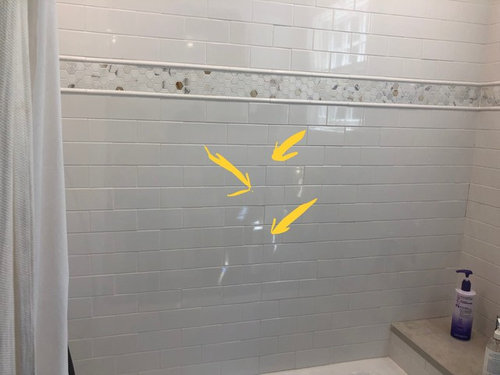When tile setters apply an uneven or insufficient layer of mortar to the tiles and subfloor tiles sometimes shift peel from the floor or crack under stress.
Uneven wall keeps cracking tile.
Lippage is hard to avoid with large tile and easy to see with narrow grout lines or tile that has square rather than rounded edges.
Sometimes you will see a chip taken out of the tile where the object hit.
This membrane bonds to the concrete floor and then bonds to the tile.
If the crack is located in one area and it extends across only a single tile the crack was likely caused by a sharp blow to the tile.
Lippage is the technical term for uneven tile edges though is more common.
If you re tiling over an uneven section of wall the corners of the tiles may stick out slightly from the rest of the tiles.
If you put a 48 straight edge up against the most sunken areas there s a gap of almost a 1 2.
Match the caulk at most tile specialty shops you can get or order sanded caulk most floor grouts are sanded that will closely match your existing grout color.
The problem is that the wall is uneven.
There are various types of tile underlayment but all serve to smooth out uneven spots in a subfloor and create an unbending layer that prevents the floor from flexing underfoot.
There is also a spot near the window trim where the wall appears to be built up too much enough so that the tile could end up proud of the trim which i m pretty sure won t look so hot.
Tiles may crack pop loose or lip a condition that occurs when the corners or edges of some tiles stick up higher.
This fix is only practical for interior tile floors and when the gaps between the tiles are 1 4 in.
Tiles laid over existing cracks usually crack due to uneven floor movement along the tile.
An uneven floor or wall surface can lead to several problems in a tile job.
This is known as lippage and it can diminish the most professional of.
In kitchens especially where heavy objects such as cans pots and pans get dropped ceramic tiles frequently break.










